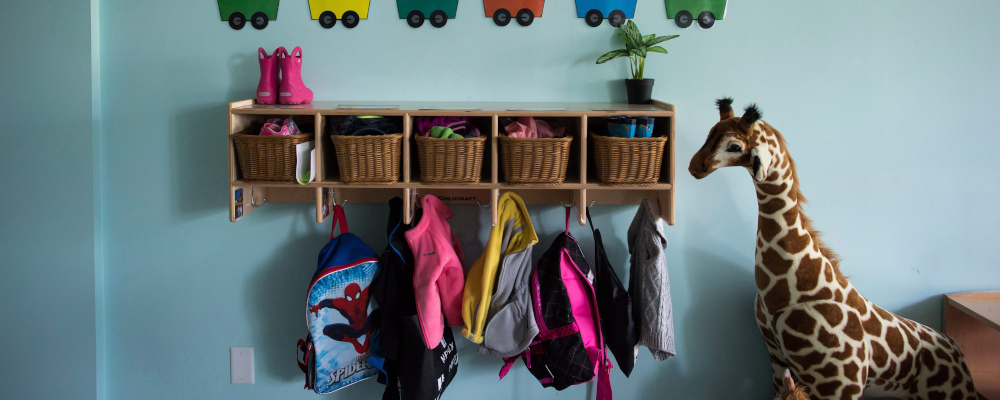Canada’s new child care program is its own worst enemy. Only about 30 percent of Canadian children have access to one of the $10/day spaces, amongst other problems. And as an access to information request has now revealed, the expansive bureaucracy overseeing the program can also result in less access to child care, not more. That’s what happened when Lanark County, just outside Ottawa, terminated its contract with home child care agency Natural Connections, leaving some 300 families scrambling for care just before the start of the school year. When this happened, we were curious as to why. Was quality of care at stake? Why curtail access just as the program was supposed to be ramping up?
The audit report obtained by freedom of information reveals technocratic reasons for the termination of the contract. If you side with Lanark, then the private agency whose contract they terminated misled parents for the sake of paying their caregivers more as well as receiving more federal money themselves. Looking at the issue from a different angle, it’s possible this may have been either necessary for their survival or inadvertent.
The cancelling of the contract with Natural Connections is something of a case study in Canada’s mismanagement of the new system. Instead of allowing parents to choose and pay for the care arrangement that works best for them, governments intervene to pick winners and losers amidst care providers and agencies doing equal jobs. Furthermore, it is a system so complex that many daycares and agencies are struggling simply to adhere to the rules whilst staying afloat.

Rewind to 2021, when the federal government introduced the Canada-Wide Early Learning and Child Care program (CWELCC), budgeting $30 billion dollars over five years. Each province and territory signed a five-year agreement, consenting to specific terms in order to receive funding. One of these was to force licensed daycares participating in the program to freeze their fees. Taxpayer funding would replace a progressively larger share of parent fees until parents were paying an average of $10 per day for licensed care.
The federal government transfers money to the provinces, who are then responsible for transferring the money to licensed daycares and home child care agencies. In Ontario, there is another layer of bureaucracy involved, as the province transfers money to each of Ontario’s 47 municipalities, like Lanark County. Municipalities are then responsible for administering these funds and function as gatekeepers. They may determine which of the many eligible families actually get a licensed child care space and, in some instances, where a child will attend.
Enter the situation in Lanark. What did Natural Connections do, precisely, that warranted them being pushed out of the program? Natural Connections is a licensed home child care agency. Such agencies contract with local home-based providers, who look after smaller numbers of children. Such children are classified as “private,” meaning their families have made arrangements directly with the home-based provider, or as “agency,” meaning their families made arrangements through the agency.
These categories mean little to nothing to parents. But they can mean a lot to government, because in Ontario, a municipality may pay less for a “private” child than for an “agency” child. It is alleged that Natural Connections worked with its home-based providers to convert their “private” children to “agency” status, which increased the dollars Lanark County needed to pay out.
Lanark County alerted the province to this. They also received a complaint from a competing agency with an axe to grind—the competing agency had lost child care providers to Natural Connections. Municipal and provincial bureaucrats connected over the issue “several times.” The audit says the province viewed the problem as a “loophole” because “parents have the right to change from Private to Agency.” End of story? No. Start of audit for Natural Connections.
The audit makes clear that the loophole Natural Connections found meant that Lanark County would be paying out more CWELCC funds than they had previously envisioned. They write that this would “negatively impact the funding allocation of other providers.”
What can we draw from this tempest in a government teapot?
Firstly, all levels of government drip with hostility toward private “for-profit” care. The many strings the federal government has attached to the funding, and certainly its expressed preference for public and non-profit service providers, have exacerbated tensions between the public sector bureaucracies administering the funding and the small child care businesses that depend on it.

Lanark perceived the agency to be attempting to increase profits. At the same time, there is plenty of evidence that government knows little about how much child care provision actually costs. Freezing child care fees and then not ensuring that the promised “replacement revenues” keep pace with inflation speaks to this.
Another point is that just as the agency found a loophole through which its home-based providers could be paid more, the government realized they don’t want to pay the extra money out. The $30 billion the federal government has allocated is simultaneously too much and too little. Too much because some jurisdictions are swimming in a funding infusion they can’t spend quickly enough. Too little because this amount does not begin to address the long-term issues of maintaining a quality system or creating new spaces. Given limited resources and the state of Canada’s economy, governments are not going to be altruistic about funding child care adequately. The result is that the government may choose to withhold funding both now and in the future in ways it shouldn’t.
The reason given to terminate the Natural Connections’ CWELCC contract hinges on parents not being 100 percent aware of the administrative details of how the municipality’s CWELCC implementation process classified their children. Given the confusion surrounding CWELCC, the question is whether it is even reasonable to expect parents to appreciate the technical nature of such a change.
What happened in Lanark is a problem with the structure of the CWELCC itself. There are few, if any, mechanisms available to either daycares or families to hold child care bureaucrats accountable for erroneous or arbitrary decisions, administrative excess, or simple incompetence. Participating in the CWELCC program is extremely complicated for licensed daycares and agencies, making it almost certain that more will be terminated from the program because, whether by accident or intent, they have run afoul of an extremely large and largely unaccountable CWELCC bureaucracy.
Ultimately, it will be parents who wind up paying the price.
Recommended for You

‘I haven’t forgotten about you’: Ten key quotes from the English-language leaders’ debate

‘Pierre Poilievre met the moment’: The Roundtable on the importance of this week’s debates and why the Leaders’ Debates Commission needs to go

‘There was no knockout punch’: Jean Philippe Fournier on a lacklustre French-language leaders’ debate

‘The power to impose tariffs at will needs to be removed from Trump’: David Frum on Trump’s disregard of the courts and how the trade war tremors will affect the U.S. economy



